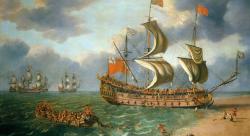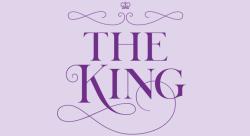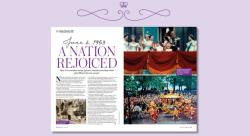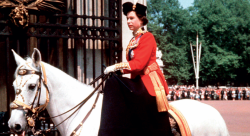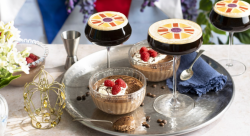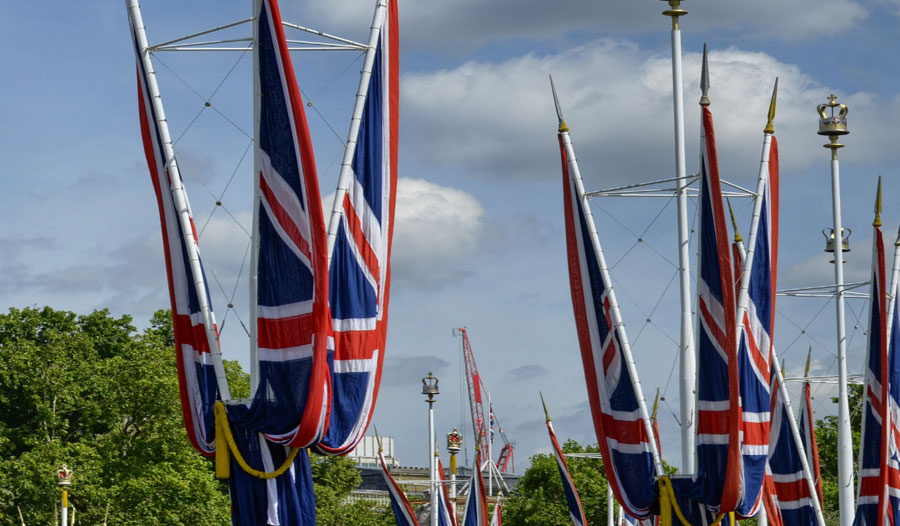
1 The King will take the Coronation oath, which was enshrined in law by the Coronation Oath Act 1688, but what he says will most likely be slightly tailored for 2023. Some of the words in the oath have changed several times over the years – the late Queen vowed to ‘maintain and preserve inviolably the settlement of the Church of England, and the doctrine worship, discipline, and government thereof, as the law establishedin England’.
2 King Charles III will be crowned in Westminster Abbey on 6 May following an almost 1,000-year-old tradition, stretching back to William the Conqueror. The historic ceremony will be conducted by the Archbishop of Canterbury, who has been tasked with this job since 1066.
3 The Coronation ceremony consists of six sections – the recognition and oath, the anointing, the investiture, the enthronement and homage, and the closing procession out of the abbey.
4 The King will be the 40th Sovereign to be crowned at Westminster Abbey.
5 The Queen had a lavish Coronation gown specially made for her by the couturier Norman Hartnell, and also had her Robe of State, worn at the start of the ceremony, and her Imperial Robe, worn after the crowning, made, rather than re-using those worn by her father, King George VI.
6 St Edward’s Crown is extremely heavy. It is made of solid gold and weighs 2.23kg (4.9lb). It contains 444 gemstones, including rubies, amethysts, sapphires, garnets, topazes and tourmalines.
7 The anointing oil is made from a secret recipe that includes orange, rose, cinnamon and musk.
8 When the King leads the procession out of Westminster Abbey he will wear the Imperial State Crown, which symbolises his sovereignty. It has existed in various forms since the 15th century and the current crown was made in 1937 for King George VI. It weighs 1.06kg (2.3lb), is made of gold, platinum and silver, and is set with 2,868 diamonds, as well as sapphires, emeralds, pearls, and rubies. St Edward’s Sapphire, set in the centre of the top cross, is said to be from a ring owned by Edward the Confessor.
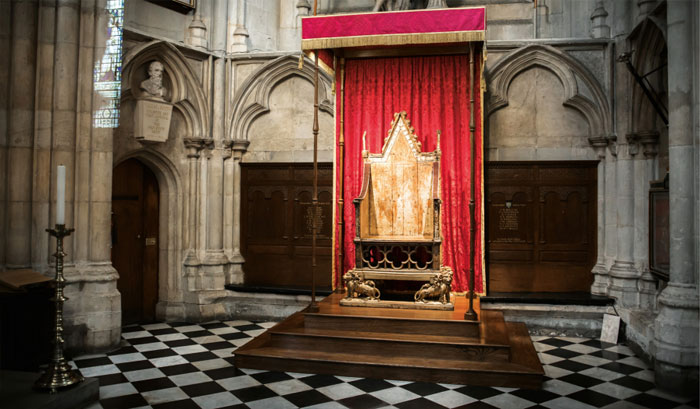 King Edward’s Chair
King Edward’s Chair9 The King will sit in King Edward’s Chair, also known as the Coronation Chair. It was commissioned by King Edward I to contain the Stone of Destiny, which was used in the coronation of Scottish kings and which Edward had taken from Scone Abbey after his successful suppression of the country. The stone was returned to Scotland in 1996 but will be transported to Westminster Abbey for use in the Coronation ceremony. The chair is the oldest piece of English furniture made by a named craftsman: Walter of Durham carved it from oak over a period of three years, completing the job in 1300. It has been used for the Coronation of every monarch since, with the exception of Mary II, the wife of William III, who sat on a smaller replica beside her husband.
10 What the King wears during the ceremony is set out in a document called the Liber Regalis, or Royal Book, which was written and illuminated in the late 14th century. It outlines the several robes that the monarch should wear at the Coronation and the running order of the ceremony. King Charles will enter the abbey wearing the Robe of State. For the anointing he will don a simple shroud, the Colobium Sindonis, followed by a long robe of gold brocade called the Supertunica. For the crowning he will don the Robe Royal over the Supertunica. At the conclusion of the ceremony the King will be draped in the Robe of Estate, also known as the Imperial Robe, a magnificent – and very heavy – cloak of purple silk velvet several metres long.
11 Queen Elizabeth II’s dresser, Angela Kelly, revealed that the Imperial State Crown is so heavy that it needed no clips to hold it in place.
12 During the investiture the monarch is presented with golden spurs, symbolising chivalry, a jewelled sword and armills – gold bracelets symbolising sincerity and wisdom.
13 The crown is just one part of the Coronation Regalia, the sacred objects that are the most important part of the Crown Jewels. These include the Sovereign’s Sceptre with Cross, the Sovereign’s Orb, and the Coronation Spoon.
14 The Coronation Spoon is one of the oldest items in the Crown Jewels, dating from the 12th-century. It is used by the Archbishop of Canterbury to anoint the King with holy oil during the ceremony. It managed to survive after the Crown Jewels were sold off or destroyed by order of Oliver Cromwell because it was bought by Clement Kynnersley. He was in charge of selling King Charles I’s effects after the Civil War and returned it to Charles II after the Restoration.
15 There is also a coronation ring, sometimes called the ‘wedding ring of England’. The Sovereign’s Ring is made of an octagonal sapphire overlaid with a cross of rubies and bordered by diamonds. It was made for the coronation of King William IV in 1831 and is placed on the fourth finger of the Sovereign’s right hand.
16 During the ceremony Camilla will also be crowned Queen Consort. She will be the first Queen to be crowned since the Queen Mother at the Coronation of her husband, George VI, in 1937. Prince Philip was not crowned because the husband of a queen is not given the title of king. In 1953, the Duke of Edinburgh pledged allegiance to the Queen, the first to do so, kneeling before her during the ceremony. Afterwards he stood, touched the crown on her head and lightly kissed her cheek, raising a smile from the young Queen. Philip was not made Prince until 1957.
17 Showing deference to changing times, Camilla will be the first consort since the 18th century to re-use a crown, rather than have one specially made. She will wear Queen Mary’s Crown, which was made for the 1911 coronation of King George V and Queen Mary and was mounted with the controversial Kohi-Noor diamond. This stone was given to Queen Victoria after being taken from India in the 18th century, and has been the subject of a diplomatic row as many countries, including India, Iran, Pakistan and Afghanistan, claim it belongs to them. Camilla’s crown will be reset with the Cullinan III, IV and V diamonds, which are from the late Queen’s personal collection and which she wore as brooches. ‘The choice of Queen Mary’s Crown was made by Her Majesty in the interests of sustainability and efficiency,’ a Buckingham Palace spokesman says. ‘Some minor changes will be undertaken by the Crown Jeweller, in keeping with the tradition that the choice of jewels is unique to the occasion and reflects the wearer’s style.’
18 Reflecting the King’s long love of music and the arts, there will be a range of traditional and contemporary music played at the Coronation. ‘His Majesty the King has personally commissioned new music and shaped and selected the musical programme for the service,’ a palace spokesman says. ‘Andrew Nethsingha, the organist and master of the choristers at Westminster Abbey, will oversee all the musical arrangements and direct the music.’ There will also be a Coronation Orchestra, made up of musicians from the King’s patronages, including the Royal Philharmonic Orchestra, which will perform six orchestral commissions specially composed for the occasion by British composers. These include a Coronation Anthem by Andrew Lloyd Webber, a Coronation March by Patrick Doyle and a new commission for solo organ by Iain Farrington. There will also be new works by Sarah Class, Nigel Hess, Paul Mealor, Tarik O’Regan, Roxanna Panufnik, Shirley Thompson, Judith Weir, Roderick Williams and Debbie Wiseman.
19 A section of the liturgy will be recited in Welsh to reflect the King’s longstanding role as the Prince of Wales. There will also be a tribute to Prince Philip, with Greek Orthodox music featuring in the service.
20 The public has also been invited to take part in this Coronation – people could apply for an invitation to the ceremony via the traditional Court of Claims, whereby anyone with an ancestor who had been involved in a previous Coronation could apply to attend. There was also a public ballot for tickets to the Coronation Concert at Windsor Castle on Sunday 7 May.
21 There were 8,000 guests in attendance at Queen Elizabeth II’s Coronation in 1953. They included the crowd-pleasing Queen Salote of Tonga, who refused to put her carriage hood up despite the rain. For King Charles’s slimmed-down Coronation there will be about 2,000 attendees. These will include friends, politicians and dignitaries from all over the world and the Commonwealth.
22 The King has streamlined his Coronation, so it will be considerably quicker than the three hours it took for the Queen’s ceremony. One significant change is that he has removed the need for dukes to kneel and pledge allegiance, with the exception of William, the Prince of Wales.
23 The Gold State Coach will once again be part of the Coronation. Built in 1762, this dazzling coach has been used at every Coronation since George IV’s in 1821. The four-tonne coach needs eight horses to pull it and is made of giltwood – gold leaf on wood. The interior is lined and upholstered in velvet and satin. It is usually on display in the Royal Mews.
24 The King’s Procession following the ceremony is expected to be much shorter than the late Queen’s, which included 16,000 people and took two hours to travel the four-mile route. Afterwards, the King and Queen Consort and family members will appear on Buckingham Palace’s balcony. Four-yearold Prince Charles stood on this balcony, alongside Princess Anne, waving to the crowds, at his mother’s Coronation.
25 The Coronation weekend will be marked across the country by the Coronation Big Lunch on Sunday 7 May, when communities will come together to eat and celebrate the occasion. For ideas about how to join in visit edenprojectcommunities.com. The Big Help Out event on 8 May aims to inspire people to volunteer for charities in their community. Visit thebighelpout.org.uk.
Pictures: Adobe Stock



